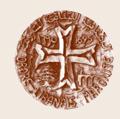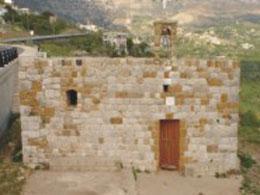 The following is from the Constitutions of the Lebanese Maronite Order : The following is from the Constitutions of the Lebanese Maronite Order :
“The Lebanese Maronite Order is one of the authentic monastic life systems… and it goes on according to the monastic tradition in the spirit of the Maronite, Syriac and Antioch Church… Our Order adopts community life and life of prayer, silence, tranquillity and ascetic acts. It is also committed to apostolic acts, going from the monastery and returning to it, according to its history and to the need of the Church".
The Lebanese Maronite Order was founded by young Maronites from Aleppo who took the monastic habit by patriarch Estephan El-Dowaihy in the Lady of Kannoubeen monastery, on the 10th of November in 1695. Since then, this date has become the commemoration day of the foundation of the Lebanese Maronite Order.
The founders first lived in the “Mart Moura” monastery, near Ehden, after they had restored it. Then, they expanded and were handed the monastery of St Elisha in Becharri in 1696. And since the beginning of the eighteenth century, the Monastic Order has spread throughout Lebanon. Hence, a series of foundation of some monasteries, such as St John Richmaya, in Shoof in 1706, Lady of Louazi in Kisriwan in 1706, St Antonios Syr near Rishmaya in 1707, St Antonios Kozhaya near Ehden in 1708 and others, began.
In 1732, the Apostolic See made the monastic rules official. These rules became a source of many monastic rules. 
In 1770, the Lebanese Maronite Order was divided into two branches : The Aleppan Maronite Order (Marian) and the Lebanese Maronite Order.
Starting from 1737, the Monastic Order has begun expanding outside the borders of the Lebanese Mountains. Therefore, foundation in Cyprus, Akka, Rome, Sidon and Tripoli took place.
In the nineteenth century, the Monastic Order took special care in training its individuals and the teaching in addition to the interest in development. However, this didn’t abolish its spiritual and hermitical role. It exposed pure monastic figures who reflected the indigenous monastic history as St Charbel, St Rafqa, the Blessed Nimatullah and others.
In the twentieth century, and with the augmentation of the Lebanese emigration abroad, the Order began founding missions in Senegal, Argentina, Brazil, Ivory Coast, Mali, Mexico, Australia, Canada, England, France, Italy and Venezuela, in addition to strengthening Cyprus, Jaffa, Bethlehem and Jerusalem.
The Order participated in developing the cultural and university sector, especially through the Holy Spirit University of Kaslik and for its mission to be humanitarian, it founded the Hospital of Lady of Deliverance and the Beit Shabab Institute, the latter being specialised for the disabled.
 The Order accompanied all those who travelled abroad, and specially participated in the stability of its people in their homeland. It was also on their side during the world, regional and local wars. It suffered the agony of war, was made homeless. Some of its foundations were destroyed. It was persecuted, and it lost some of its monks. When the time came to return home, it was one of the first who returned and rebuilt what had been destroyed. Its belief is that the earth is a gift and a vocation. Those who abandon it lose their identity and forgo their history. The Order accompanied all those who travelled abroad, and specially participated in the stability of its people in their homeland. It was also on their side during the world, regional and local wars. It suffered the agony of war, was made homeless. Some of its foundations were destroyed. It was persecuted, and it lost some of its monks. When the time came to return home, it was one of the first who returned and rebuilt what had been destroyed. Its belief is that the earth is a gift and a vocation. Those who abandon it lose their identity and forgo their history.
Today, the Order progresses through its 450-member activities in its male and female branches, in 80 monasteries and foundations in and outside Lebanon.
|